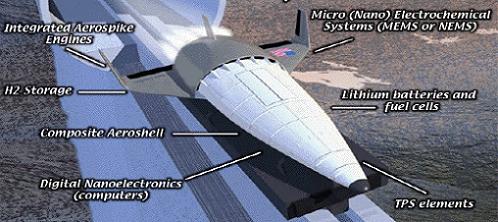In recent years there has been a call to return to the moon. On the assumption that budgets will be approved for this, technologically it will be possible to prepare for this immediately through the re-production of the Apollo spacecraft, including the production of the Saturn 5 launch missiles
In recent years there has been a call to return to the moon. Assuming that budgets are approved for this, technologically it will be possible to evaluate this immediately through the re-production of Apollo spacecraft including the production of Saturn 5 launch missiles. The obvious question is, will this be a useful step? What provokes thoughts about the wisdom of returning to technologies developed in the 60s is not only the technological gap between then and now, but also the long evaluations between launch and launch, while reproducing a launch vehicle and spacecraft each time for the next launch. Launch vehicles These do not make any economic sense today. The approach to be adopted is the use of a multi-purpose vehicle with a large load. The best example of this is the space shuttle, despite the Columbia disaster. The space shuttle can carry a load of 20 tons for orbit around the Earth. It is likely that a flight to the moon will require the use of a smaller load. Even if the shuttle can only carry a load of 30 tons, its multiple use will lower the launch cost.
On the face of it, it is possible to replace the shuttle's engines with Saturn 5 engines (which are more powerful). This is indeed a complex operation, but it is possible. And maybe it is necessary to turn to a new direction, which is more technically correct and more advanced? What then is the solution to strive for? This refers to an aircraft that is fundamentally similar to the current shuttle, except that it will be equipped with two propulsion systems, a jet propulsion and a rocket propulsion. The jet propulsion will allow the shuttle to take off from any airport without heavy logistical assessments as is done today. With the help of these engines the shuttle will reach a height of 10-15 km and then the rocket propulsion will be activated by means of which you reach the moon.
For this purpose, new engines must be developed that will enable the development of a flight speed of up to 70,000-80,000 km/h, with the aim of shortening the duration of the flight to 8-10 hours. Currently, the flight time to the moon is 65 hours. Upon returning to Earth, when the shuttle enters the atmosphere, after it is Passing the warm-up area, the jet engines are turned on in preparation for the landing, which can be carried out at any airport. The use of the jet engines comes to save the liquid oxygen tanks currently used by the launch vehicles, including the current space shuttle. The shuttle's jet engines can suck the essential oxygen from the atmosphere like any jet plane. In the space saved, various loads can be stored. Flying at a speed of 70,000-80,000 km/h is not a revolutionary thing that requires the development of futuristic technologies. It is possible to build on existing technologies while improving various components in them.
With the shortening of the flight time to the moon and the transition to the use of normal airports, the launch of each shuttle will be fast. Assuming that a fleet of shuttles is built, it will be possible to launch each of them at a faster rate than is done today, and this will be of great significance, for example in the event of malfunctions that require the rapid transfer of spare parts to repair damaged equipment, Or replacing it in case it is irreversibly damaged, or for the quick evacuation of those who will be on the moon.
A trunk with a load capacity of 10 tons allows the transfer of a lot of equipment for research, maintenance, medical equipment (including operating rooms) and regular supplies. The luggage compartment can be quickly converted to transfer passengers or vice versa or a combination of both, all according to the need. What is most important is that beyond this concept, it will allow the rapid establishment of bases on the moon, and this is the purpose of the launches to it.
The materials from which the following spacecraft will be built (on the NASA website)

